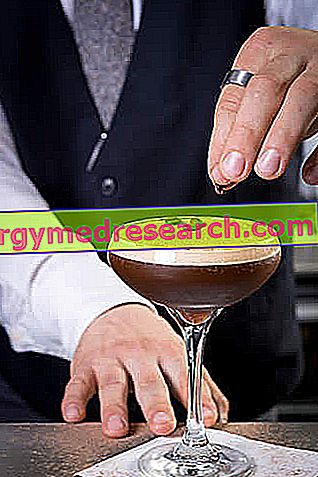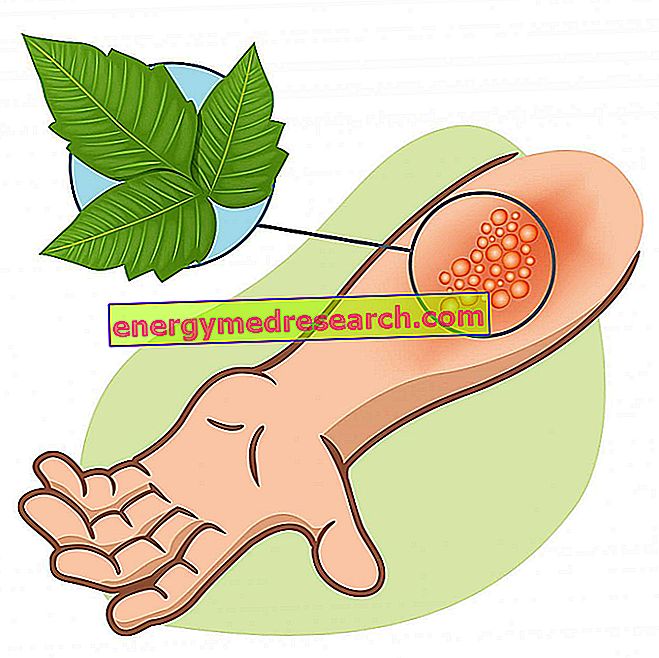Generality
The shaken coffee is an “agitated” drink (from the English verb to shake ), prepared with espresso coffee and ice cubes; furthermore, at the discretion of the customer, a sweetener can be added.

Contrary to what can be deduced by analyzing the etymology of the name, shaken coffee is a typical Italian product and not English or American. In fact, even in the Anglo-Saxon countries the drink is known by the term "Italianized" (shaken, less frequently "shaked coffee").
It is consumed above all in the summer period due to its thirst-quenching capacity associated with the taste of coffee.
Nutritional Features
The shakerato “traditional” coffee is a drink that contains caffeine.
For this reason it is not recommended for children to eat or abuse it, for pregnant / lactating women, for heart patients, hypertensive patients and those suffering from certain digestive disorders such as: gastritis, ulcer, gastroesophageal reflux and irritable bowel syndrome with diarrhea .
The heat of shaken coffee depends on the presence or not, and on the quantity, of sugars. A moderately sweetened product contains 7-14 g each 100-150 ml, or 25-50 kcal.
Energy is provided exclusively by simple carbohydrates, nutrients to be taken with caution in case of: hyperglycemia, type 2 diabetes mellitus, hypertriglyceridemia, tendency to tooth decay.
It does not contain lactose, gluten or potentially allergenic molecules.
There are no philosophical-food implications worthy of note (vegetarianism, veganism, etc.).
A clarification on the hygienic aspect is a must. Shaken coffee or similar cocktails are the main culprits in the so-called "traveler's diarrhea". In certain countries where drinking water is not yet within everyone's reach, ice is often packaged with unhealthy water rich in pathogenic microorganisms. It is advisable to avoid consumption or to check the purity of the water used.
recipe
The shaken coffee recipe is quite simple, but it changes considerably according to the skill of the barman / barman.
It can be produced using various types of cocktail shakers (Boston Shaker, Cobbler Shaker, French Shaker and Bullet Shaker), of different materials (metal or metal and glass), with human or electric propulsion.
The shaken coffee can be served in any glass but those for cocktails such as martini glass or champagne glass (for example the coppa Asti) would be more suitable. It is not uncommon for champagne flutes, collins glass, granities and tumblers to be used.
While not requiring any decoration, some create a sweetened rim on the glass, dust the surface foam with cocoa or coffee powder or place one or three coffee beans on it .
Being a frozen cocktail, it is advisable to cool both the glass and the shaker by filling them with ice.
We now come to the choice of the fundamental ingredient: coffee . This should be of the espresso type but the drink can also be packaged using the mocha one .
To obtain a portion of shaken coffee, 100 ml of espresso coffee is sufficient.
The basic coffee may be the result of the infusion of one or two elongated portions (as a normal espresso is equivalent to 25 ml) or of four normal portions; the latter solution is not widely adopted as it increases the cost of the drink which, however, will be less thirst-quenching and will contain significant concentrations of caffeine.
Do not take this last delivery as if it were a fixed rule as it can vary considerably.
After having learned from the customer which and how much sweetener he likes, it is necessary to drain the shaker from the residual water of the cooling, add the espresso coffee, the sweetener in the useful doses and start shaking.
The stirring technique cannot be described but it is recommended to continue until all the drink has been reduced to a foam . However it is also necessary not to overdo it; the risk would be to melt the ice excessively diluting the drink.
Then comes the moment of service; the better the shaker was, the harder it becomes to serve the drink due to the foamy consistency which slows the descent through the filter.
When needed, taking care not to let the ice pass, it is advisable to open the shaker and help yourself with a long barman spoon.
The operation must be rapid or the consistency of the drink will be compromised.
The shaken coffee should still be predominantly frothy with an obvious process of "dismantling" (similar to that of stout beers - black, like Guinness - which seem to decant).
The optimal service temperature is around 10 ° C.
Variable ingredients
The variations of shaken coffee concern:
- Type of coffee stain: we recommend the espresso but some use the drink made with mocha.
- Type of coffee: in addition to different blends, certain customers request to have a decaffeinated coffee shaker.
- Degree of sweetening (expressed in sugar beet sachets; 1 sachet = 7 g): normal (7-14 g of sucrose), slightly sweetened (7 g of sucrose), bitter (without sucrose), sweet (14-21 g sucrose) or very sweet (> 21 g of sucrose).
- Type of sweetener: granular sugar (white beet, brown cane), syrups (corn glucose, agave, maple, etc.), sweeteners acalori (stevia extract, acesulfame potassium, sodium cyclamate, sodium saccharinate, etc.).
- Alcoholic correction: whiskey cream is particularly used; others are sambuca, coffee or chocolate liqueur.



